Related Research Articles

A Marian apparition is a reported supernatural appearance by Mary the mother of Jesus, or a series of related such appearances during a period of time.

Our Lady of Fátima is a Catholic title of Mary, mother of Jesus, based on the Marian apparitions reported in 1917 by three shepherd children at the Cova da Iria in Fátima, Portugal. The three children were Lúcia dos Santos and her cousins Francisco and Jacinta Marto. José Alves Correia da Silva, Bishop of Leiria, declared the events worthy of belief on 13 October 1930.

The Nativity of the Blessed Virgin Mary, the Nativity of Mary, Marymas or the Birth of the Virgin Mary, refers to a Christian feast day celebrating the birth of Mary, mother of Jesus.

The Sanctuary of Our Lady of Knock, commonly referred to as Knock Shrine, is a Roman Catholic pilgrimage site and national shrine in the village of Knock, County Mayo, Ireland, where locals claimed to have seen an apparition in 1879 of the Blessed Virgin Mary, Saint Joseph, Saint John the Evangelist, angels, and Jesus Christ.

Marian devotions are external pious practices directed to the person of Mary, mother of God, by members of certain Christian traditions. They are performed in Catholicism, High Church Lutheranism, Anglo-Catholicism, Eastern Orthodoxy and Oriental Orthodoxy, but generally rejected in other Christian denominations.
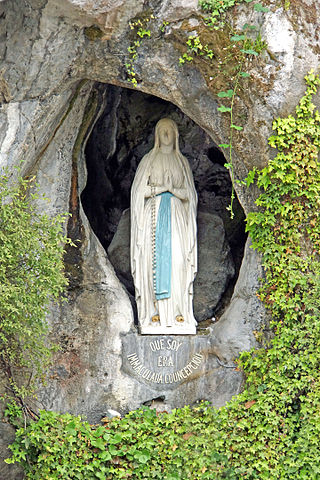
Our Lady of Lourdes is a title of the Virgin Mary. She is venerated under this title by the Roman Catholic Church due to her apparitions that occurred in Lourdes, France. The first apparition of 11 February 1858, of which Bernadette Soubirous told her mother that a "Lady" spoke to her in the cave of Massabielle while she was gathering firewood with her sister and a friend. Similar apparitions of the "Lady" were reported on 18 occasions that year, until the climax revelation in which she introduced herself as: "I am the Immaculate Conception". On 18 January 1862, the local Bishop of Tarbes Bertrand-Sévère Laurence endorsed the veneration of the Blessed Virgin Mary in Lourdes.

Flores de Mayo is a festival held in the Philippines in the month of May. It is one of the May devotions to the Blessed Virgin Mary and lasts for the entire month.

Catholic devotions are particular customs, rituals, and practices of worship of God or honour of the saints which are in addition to the liturgy of the Catholic Church. The United States Conference of Catholic Bishops describes devotions as "expressions of love and fidelity that arise from the intersection of one's own faith, culture and the Gospel of Jesus Christ". Devotions are not considered part of liturgical worship, even if they are performed in a church or led by a priest, but rather they are paraliturgical. The Congregation for Divine Worship at the Vatican publishes a Directory on Popular Piety and the Liturgy.
Anglican Marian theology is the summation of the doctrines and beliefs of Anglicanism concerning Mary, mother of Jesus. As Anglicans believe that Jesus was both human and God the Son, the second Person of the Trinity, within the Anglican Communion and Continuing Anglican movement, Mary is accorded honour as the theotokos, a Koiné Greek term that means "God-bearer" or "one who gives birth to God".
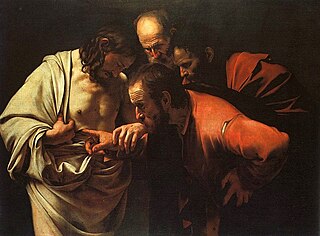
A number of people have claimed to have had visions of Jesus Christ and personal conversations with him. Some people make similar claims regarding his mother, Mary. Discussions about the authenticity of these visions have often invited controversy. The Catholic Church endorses a fraction of these claims, and various visionaries it accepts have achieved beatification, or even sainthood.

Mary, the mother of Jesus in Christianity, is known by many different titles, epithets, invocations, and several names associated with places.

Our Lady of Manaoag is a Roman Catholic title of the Blessed Virgin Mary venerated in Manaoag, Pangasinan, the Philippines. The sacred statue is referred to as Apo Baket in the native language of local devotees.

The veneration of Mary in the Catholic Church encompasses various devotions which include prayer, pious acts, visual arts, poetry, and music devoted to her. Popes have encouraged it, while also taking steps to reform some manifestations of it. The Holy See has insisted on the importance of distinguishing "true from false devotion, and authentic doctrine from its deformations by excess or defect". There are significantly more titles, feasts, and venerative Marian practices among Roman Catholics than in other Western Christian traditions. The term hyperdulia indicates the special veneration due to Mary, greater than the ordinary dulia for other saints, but utterly unlike the latria due only to God.

Mediatrix of all graces is a title that some in the Catholic Church give to the Blessed Virgin Mary; as the Mother of God, it includes the understanding that she mediates the Divine Grace. In addition to Mediatrix, other titles are given to her in the Church: Advocate, Helper, Benefactress. In a papal encyclical of 8 September 1894, Pope Leo XIII said: "The recourse we have to Mary in prayer follows upon the office she continuously fills by the side of the throne of God as Mediatrix of Divine grace."
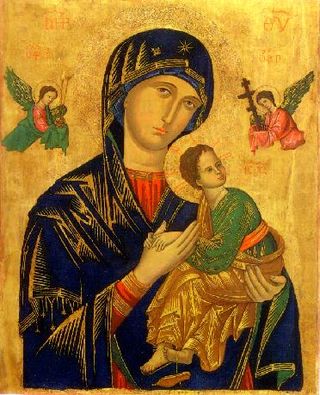
Mary has been one of the major subjects of Western art for centuries. There is an enormous quantity of Marian art in the Catholic Church, covering both devotional subjects such as the Virgin and Child and a range of narrative subjects from the Life of the Virgin, often arranged in cycles. Most medieval painters, and from the Reformation to about 1800 most from Catholic countries, have produced works, including old masters such as Michelangelo and Botticelli.
Judiel Nieva, also known as Angel de la Vega, is a Filipino transgender actress and businesswoman, notable for her claims of seeing a vision of the Virgin Mary atop a guava tree in Agoo, La Union, Philippines in what was labeled as the "Miracle of Agoo" from 1989 until 1993. The Catholic Church officially declared Nieva's visions as non-supernatural in 1993.

Catholic Marian movements and societies have developed from the veneration of the Blessed Virgin Mary by members of the Catholic Church. These societies form part of the fabric of Mariology in the Catholic Church. Popular membership in Marian organizations grew significantly in the 20th century, as apparitions such as Our Lady of Fátima gave rise to societies with millions of members, and today many Marian societies exist around the world. This article reviews the major Marian movements and organizations.

The Lady of All Nations is a Catholic Marian title sometimes associated with apparitions of the Blessed Virgin Mary to Ida Peerdeman of Amsterdam, Netherlands. Peerdeman claimed to have received 56 visions of the Lady from 1945 to 1959.
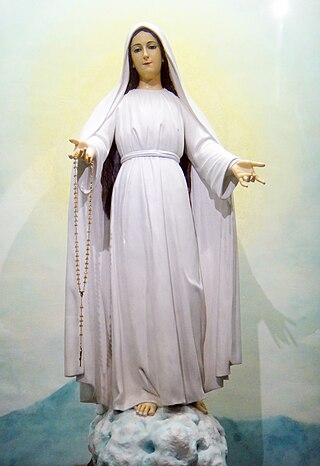
Mary, the Mediatrix of All Grace, also known as the Our Lady of Lipa, is an alleged Marian apparition that occurred within the Carmelite Monastery of Lipa, Batangas, Philippines. The event occurred to a former Carmelite postulant, Teresita Castillo. The original statue associated with the apparition is currently enshrined at the monastery.
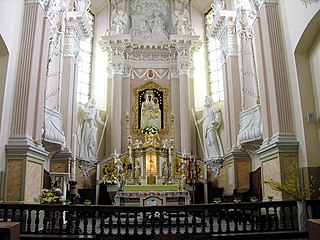
Our Lady of Šiluva is Roman Catholic image of the Blessed Virgin Mary venerated at the Basilica of the Nativity of the Blessed Virgin Mary, Šiluva shrine in Lithuania. The patriotic icon is highly venerated in Lithuania and is often called Lithuania's greatest treasure.
References
- 1 2 3 Sunico, Nena. "My angel brought me home — Angel Stories". Catholic Online. Retrieved 2018-09-21.
- 1 2 3 Carballo, Bibsy M., "What is the real message of the Virgin to Emma de Guzman?", Philippine Daily Inquirer, December 13, 2009
- ↑ Gorillo, Cesar. "The mystical experience of Emma de Guzman", Gold Star Daily, January 21, 2014
- ↑ "Farol, Paul. "Blessed Virgin Mary says Noynoy will be President in 2010", AsianCorrespondent.com, September 18, 2009". Archived from the original on August 26, 2014. Retrieved August 21, 2014.
- ↑ Ballescas, "December 8 message from Mama Mary for Filipinos", The Freeman, December 10, 2011
- ↑ "Messages from Mama Mary". 15 September 2012.
- ↑ "Schedule of Events". Lapietainternational.com. Archived from the original on June 13, 2012. Retrieved 2012-09-30.